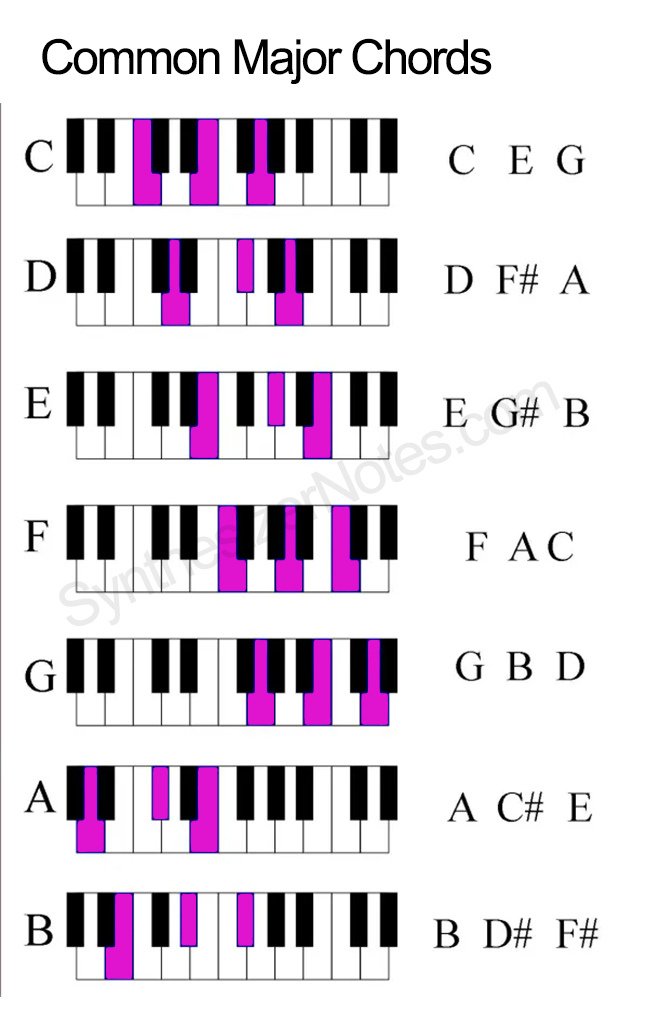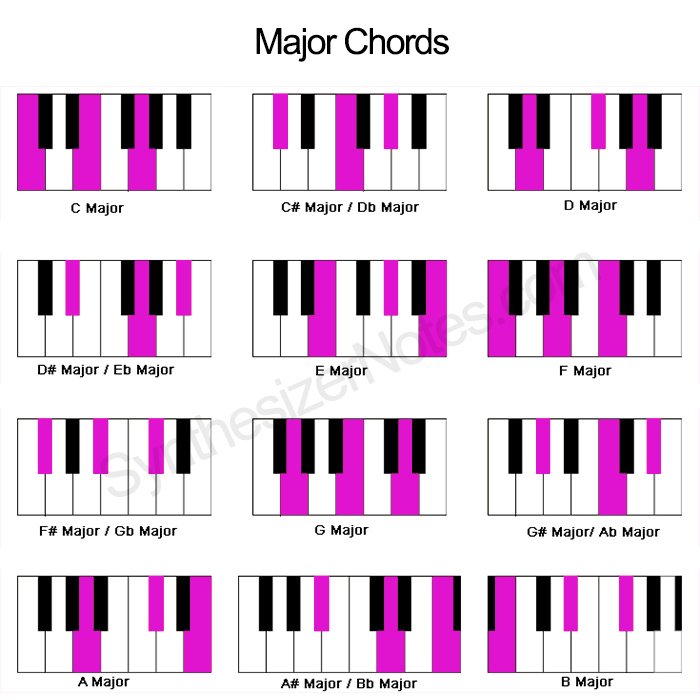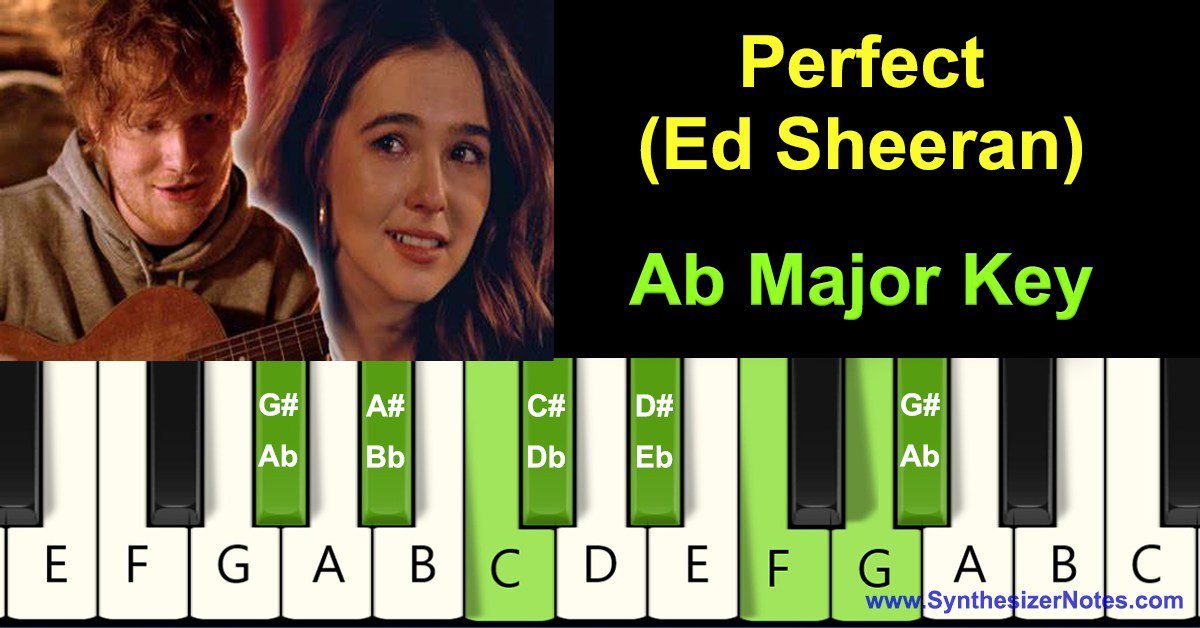If you’ve ever wanted to learn to play the keyboard, then along with piano notations and scales, you should also learn about the piano chords.
Why Piano Chords? Because, chords are the building blocks of music. They form the harmony that supports the melody of a song.
Why You Should Know about the Piano Chords?
Piano chords are used to create harmony in music, and understanding them will help you in playing and composing music.
They can be used to accompany a melody, create a sense of rhythm, or simply add interest to a piece of music
Piano chords are an essential element to any genre of music. They are the backbone to any good song.
Whether you’re playing pop, rock, or classical music, knowing the right chords to play can help you convey the right message in your performance.
As chords provide the foundation for the harmony and accompaniment of a song, learning them is an essential skill for any piano player.
In this article, we’ll break down the basics of piano chords and give you some tips to help you master them. We will also explore some common chord types, their construction, and how to play them.
This page also provides notation for different chords and their representation on a keyboard to help you play them effortlessly.
With this knowledge, you’ll be able to play your favourite songs and create your own unique compositions.
So now let’s see what is a piano chord?
What is a Piano Chord?
To put it simply,
piano chord is a combination of three or more notes played at the same time.
Or
piano chords are created when three or more notes are played simultaneously.
For example,when you play C, E, and G notes together, a C major chord is formed.
Or, when C, Eb, and G notes are played simultaneously, a C minor chord is formed.
While playing a song on the piano, chords are usually played with the left hand, whereas the melody or piano notes are played with the right hand.
What Do You Need to Learn Piano Chords?
Understanding chords can be a bit overwhelming for beginners, and may seem daunting to the untrained ear.
But if you know the notes that build them, then playing the chords become very easy.
This requires an understanding of chord notation and some basic knowledge of music theory.
Remember – Chords are essential to understand the harmony of music, and with some practice and patience, you can become a pro in no time.
What are the Common Chords for the Beginners?
There are a few chords that every beginner should know, regardless of the genre of music they’re interested in.
Major Chord, Minor Chord
These are the major and minor chords, depending on the combination of the notes used.
From the variations of the these two basic chords, i.e. major and minor, new chords can be created. This gives rise to diminished, augmented or seventh chords among others.
Both (major and minor) chords are triads, means made up of three notes or when 3 notes are played at the same time.
For example, a C major chord is made up of the notes C, E, and G played together.
Similarly, a C minor chord is made up of the notes C, Eb, and G played together.
Some common chords to start with include C major, D minor, G major, and A minor.
As you progress in your piano journey, you will also come across other types of chords lke augmented, diminished, seventh chords and others.
Knowing the difference between these chords is crucial, if you want to play a song convincingly.
The major and minor chords are the basic building blocks for all music, while the seventh chords (made up of four notes) add some flavor and complexity to the chords.
Understanding Intervals
Before diving into chord construction, it’s essential to understand intervals.
An interval is the distance between two notes on the piano.
Intervals are measured in half steps and whole steps.
A half step is the distance between two adjacent keys, including both white and black keys.
A whole step consists of two half steps, or the distance between two keys with another key in between.
Major and minor chords are built using specific intervals.
A major chord consists of a root note, a major third (four half steps above the root), and a perfect fifth (seven half steps above the root).
A minor chord, on the other hand, has a root note, a minor third (three half steps above the root), and a perfect fifth (seven half steps above the root).
Major Chords
Major chords have a happy, bright sound and are the foundation of many songs.
To construct a major chord, you need
the root note, a major third, and a perfect fifth.
Or in other words,
four half steps above the root and seven half steps above the root.
For example, to build a C major chord,
start with the root note C,
add the major third E (four half steps above C),
and the perfect fifth G (seven half steps above C).
The C major chord is made up of the notes C, E, and G.
Here are some common major chords and their notes:
C major: C, E, G
D major: D, F#, A
E major: E, G#, B
F major: F, A, C
G major: G, B, D
A major: A, C#, E
B major: B, D#, F#
Major chords are represented by the root note as a capital letter. For example, a C major chord is written as “C.”
In next image, common major chords are shown on piano keys.

In next image, all major chords are shown on piano keys.

Minor Chords
Minor chords have a darker, sadder sound compared to major chords.
To construct a minor chord, you need
the root note, a minor third, and a perfect fifth,
Or in other words,
three half steps above the root and seven half steps above the root.
For a C minor chord, start with the root note C, add the minor third E♭ (three half steps above C), and the perfect fifth G (seven half steps above C). The C minor chord is made up of the notes C, E♭, and G.
Here are some common minor chords and their notes:
C minor: C, E♭, G
D minor: D, F, A
E minor: E, G, B
F minor: F, A♭, C
G minor: G, B♭, D
A minor: A, C, E
B minor: B, D, F#
Minor chords are represented by the root note followed by a lowercase “m.” For example, a C minor chord is written as “Cm.”
How Many Chords Can Be Played On a Piano?
There are vast numbers of chords that can be played on a piano. Why?
Because there are an infinite number of ways to combine the 88 keys on the piano.
However, there are some basic chord types that are commonly used in music. These include:
- Major chords
- Minor chords
- Diminished chords
- Augmented chords
- Suspended chords
- Seventh chords
- Ninth chords
- Eleventh chords
- Twelfth chords
Each of these chord types can be played in a variety of inversions, which means that the order of the notes in the chord can be changed. This can create a variety of different sounds.
In addition to these basic chord types, there are also a number of extended chords that are used in jazz and other genres of music. These chords often contain more than three notes.
The number of chords that can be played on the piano is truly vast. However, by learning the basic chord types and inversions, you will be able to play a wide variety of music.
Major and Minor Chords are the two most common types of piano chords. So, we have covered these two most commonly used chords in this page. Now we will see some other basic things about the piano chord.
Other types of piano chords like Diminished Chords, Augmented Chords, Seventh Chords, Chord Inversions and Chord Progressions are covered in piano chords – part 2 page.
Tips for Mastering Piano Chords
Learning to play piano chords can be challenging, but there are a few things you can do to make it easier.
Firstly, practice playing in time. Focus on keeping a steady tempo, and try to play the chords at a consistent pace.
Secondly, practice moving from one chord to another smoothly. This will help you make seamless transitions between chords in a song.
Lastly, practice playing piano chords in different keys, as this will help you understand the theory behind the chords and make it easier to play along to any song.
How to Play Piano Chords
Playing piano chords requires some finger dexterity, but with practice, you can do it.
There are a few things you need to keep in mind when playing chords.
Firstly, make sure you are sitting in the right position, with your back straight and your hands at the right height.
Secondly, use the right fingering technique.
Each finger is designated a number, and you need to use the correct finger to play each note of the chord.
Lastly, practice good hand posture to prevent injury and to make it easier to play chords.
Applying Chords to Your Piano Playing
Learning piano chords is a journey, but it’s a journey that’s well-worth taking.
With some dedication and effort, you can unlock the world of music and play some of your favorite songs.
As you learn piano chords and progress in your piano journey, you’ll find that chords are an essential tool for creating beautiful music.
Start by practicing major and minor chords, then gradually expand your repertoire to include diminished, augmented, and seventh chords.
Experiment with chord inversions and progressions to find new ways to express yourself musically.
Remember, practice is the key to mastering piano chords. So, take it slow, be patient, and practice regularly. The more you play and experiment with chords, the more comfortable and confident you’ll become.
Where to Learn More about Piano Chords?
There are countless resources available online to help you learn piano chords, including videos, websites, and apps.
In addition to these resources, consider taking lessons from a qualified piano teacher.
A teacher can provide personalized feedback and help you improve your technique in a more structured way.
By understanding the fundamentals of piano chords, you’ll unlock a world of musical possibilities and take your piano playing to new heights.






